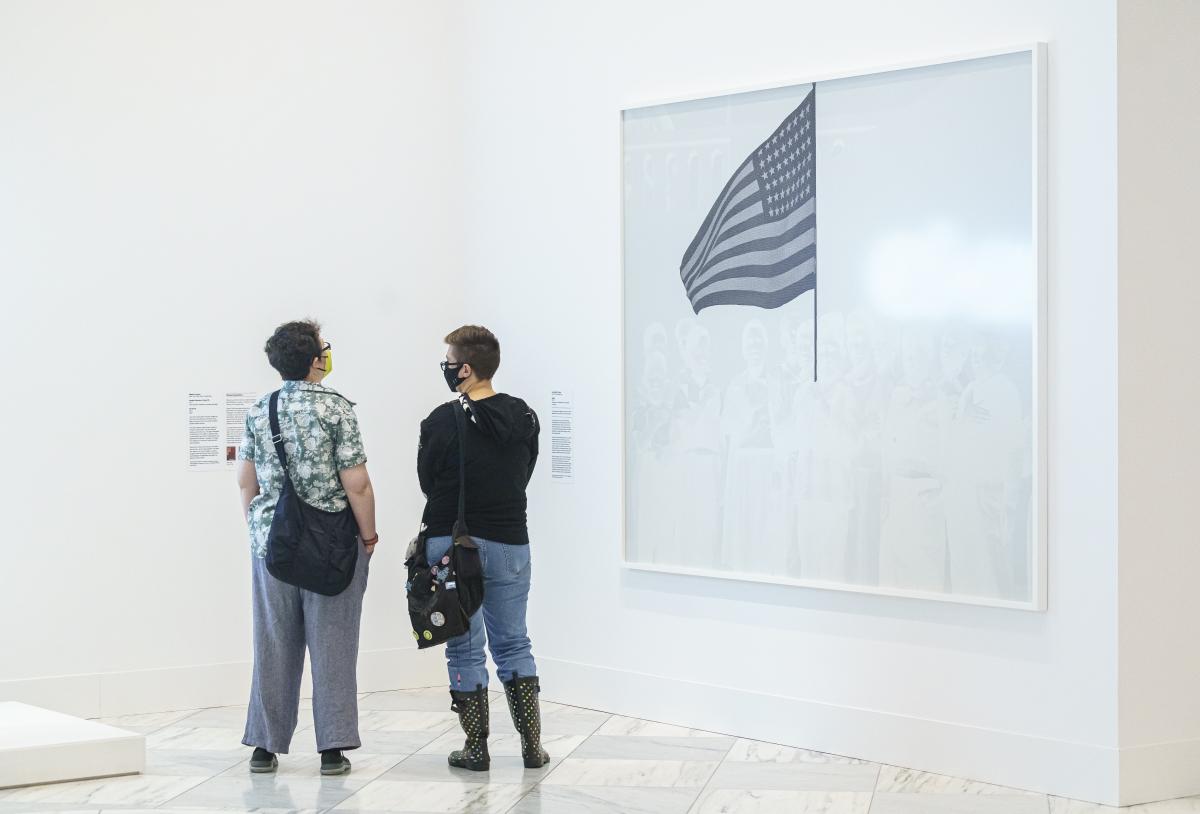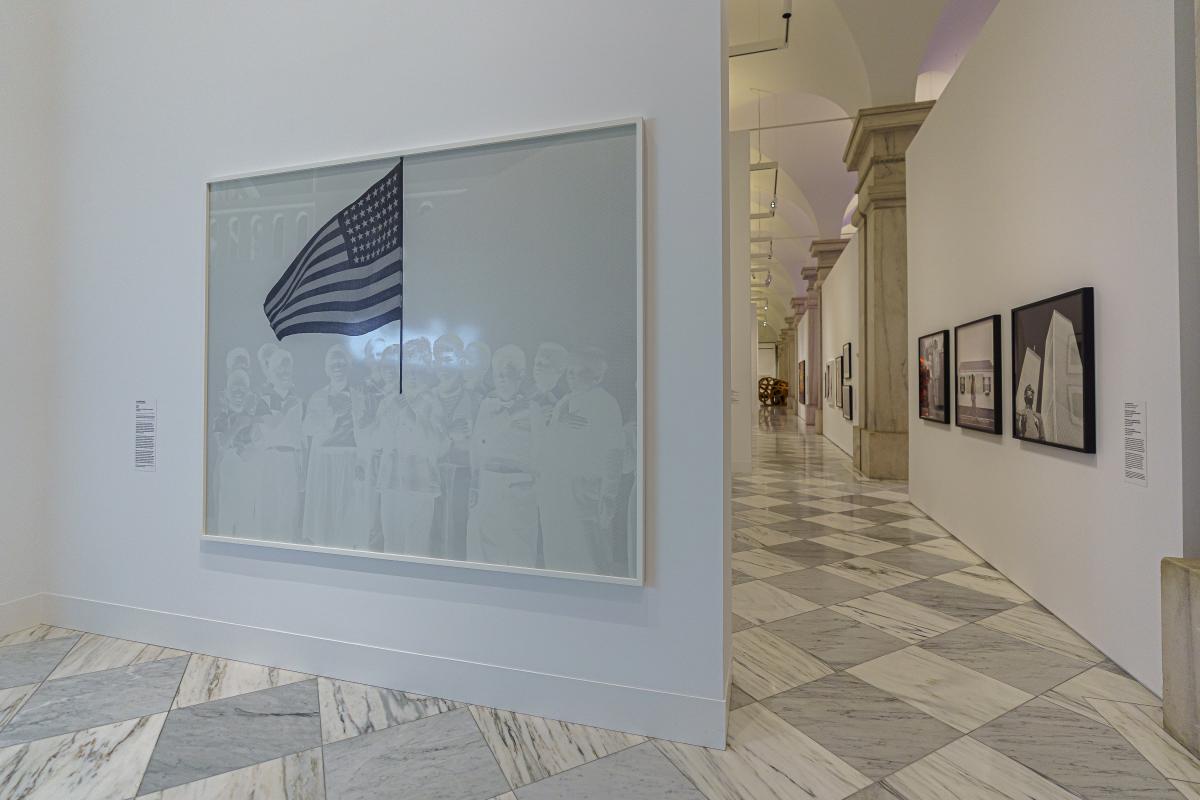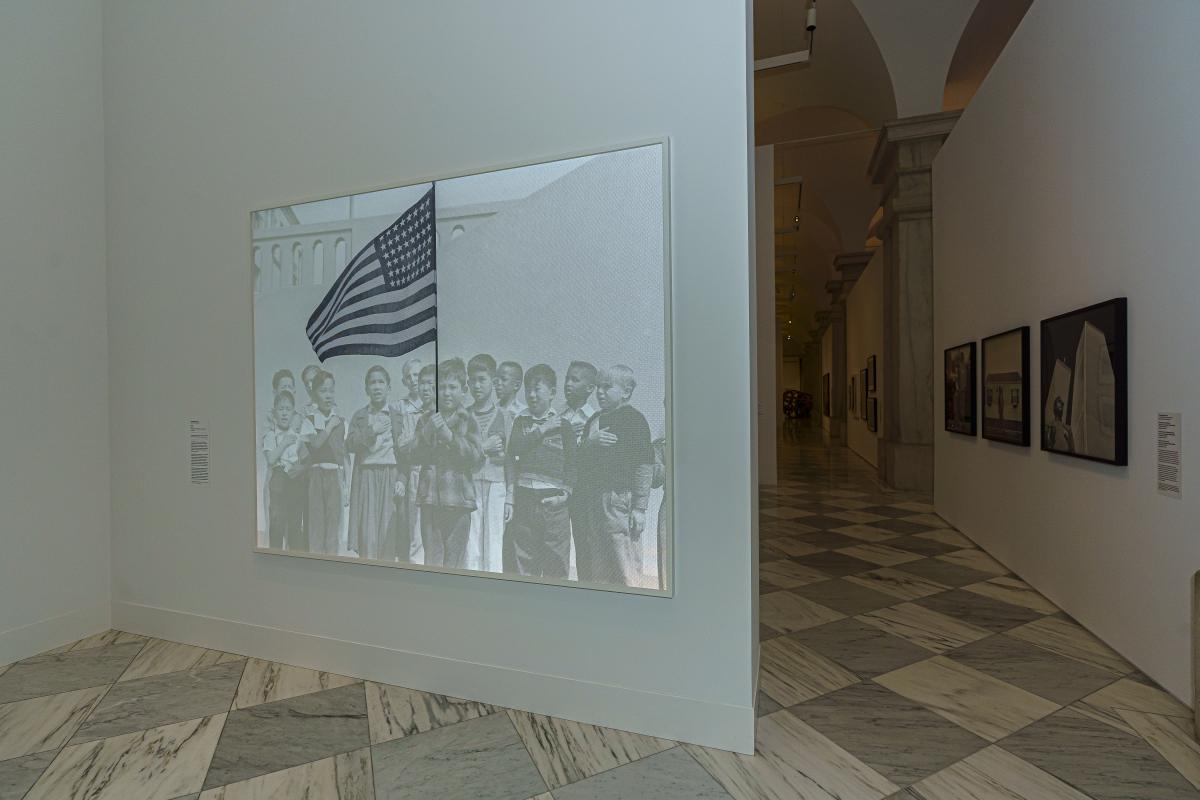Hank Willis Thomas was born in 1976, in Plainfield, New Jersey, the son of artist and historian Deborah Willis and civil rights activist and entrepreneur Hank Thomas. He is a conceptual artist whose work addresses identity, politics, popular culture, and mass media in relation to race.
At first glance, Pledge appears to be a large black and white print of a group of ghostly children. Thomas often uses printing techniques that engage viewers and requires that they change position while looking at his work. He appropriates from the mass media, historical as well as contemporary, to investigate perspective, identity, and commodity culture. At the core of his practice is photography, and the claims of “truth” posited by photographic representation. When viewers change positions, the image automatically changes as well, calling into question the very idea of a personal position or a historical perspective. An optical illusion combined with a kind of visual punning, the experience is as wondrous and surprising today as the stereoscope was to the nineteenth century.
When looking at Pledge in ordinary light in the museum, you see a United States flag hovering against a plain background. To fully experience the work, we are invited to stand in front of it and illuminate it with the flash of a phone camera. When the camera flash strikes, it lights up the surface to reveal the full picture. The full image shows boys of various ethnicities saluting the flag. As the flash dissipates, the image fragments again, leaving only the hovering flag.
Thomas based this work on an earlier photograph taken by Dorothea Lange, the photographer best known for her Depression-era work documenting the lives of Americans as part of her work for the Farm Security Administration. She made her image for the War Relocation Authority in 1942, to document Japanese Americans in the San Francisco area before and after their forced relocation to camps. Lange captured the image at a public school before the students of Japanese descent were incarcerated. Its original caption reads, “Flag of allegiance pledge at Raphael Weill Public School, Geary and Buchanan Streets. Children in families of Japanese ancestry were evacuated with their parents and will be housed for the duration in War Relocation Authority centers where facilities will be provided for them to continue their education.”
Thomas says his retroreflective works illuminate “images, stories and parts of history that are often overlooked or have become . . . lost.” The boys’ removal from the image in Pledge stages their removal as citizens from United States history. By rephotographing the artwork, viewers engage with history, bringing to light this lost story and reclaiming the boys’ visibility within it. Thomas has noted that “we live in an era in which there are more images produced in a single second than any of us can make sense of in our entire lives. Now we’re used to scrolling, looking past images.” The hyper-consumption of media that our digital devices make possible often inhibits our ability to look closely. By encouraging viewers to photograph his works, Thomas asks them to slow their consumption of images by focusing on the detail. “What interests me most in all my work, be it photography or sculpture or video or text, is reflexiveness,” Thomas said. “I think the viewer needs to be the photographer now. Meaning, when I make work, I’m asking, ‘How will what the viewer sees affect their relationship to the object or image that I’m making?’”
This story is based on text created for SAAM’s collection galleries.





















